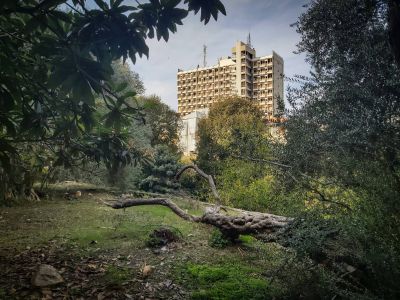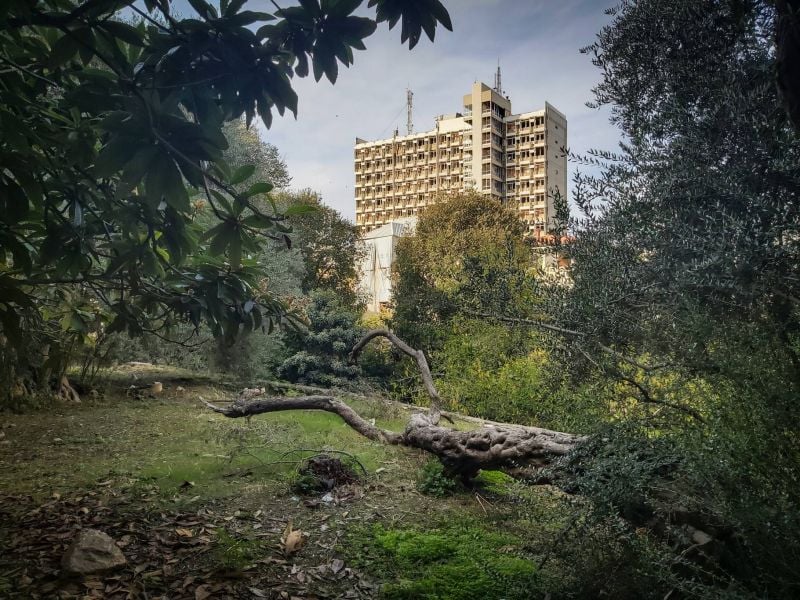
The headquarters of Electricite du Liban seen from Mar Mikhael's secret garden, planted over 100 years ago by Dr. Habib Tobagi. (Credit: João Sousa/L’Orient Today)
Sitting under a tilting berry tree, the smell of damp soil, so easily recognizable in the winter, fills the air. The ground is soft underfoot. Ripe fruits are falling to the earth. It is tranquil. We start walking up the hillside. One would hardly think this is still Beirut, but it is.
As we reach the top, the verdant scenery is suddenly interrupted by the sight of Electricite du Liban’s headquarters and J. M. Bonfils’ Tower. You are reminded you are not in the Horsh, or Sanayeh, but in one of the busiest parts of town: Mar Mikhael. This is the Tobagi garden, Beirut’s last functioning orchard. Although older than most of the neighborhood, it is a little-known mass of flora and fauna set amidst a sea of concrete.
“This place has been running for over 100 years,” explained Marie Rose Tobagi, granddaughter of the garden’s founder, who grew up here. She has a lot of memories of “family lunches, picnics, barbecues, dinners and birthdays.”
And, if not for a twist of fate, this urban oasis would not be here today.
The land measures 4,695 meters squared, a size unheard of in Beirut today. It is largely hidden from the public, boxed in on all sides by rows of apartment buildings. An anonymous metal gate seals off its alley entrance from pedestrian view.
The three-level terraced orchard was built by Dr. Habib Tobagi, who bought the land on the hillside and transformed it. Some features were already there, such as the 150-year-old berry tree.
According to his grandson Joseph Tobagi, the elder Tobagi was one of the first people to move to Mar Mikhael in 1889. There he built a row of three houses. “You can tell this area was still a suburb back then because my grandfather did not include storefronts on the first building’s ground floor facing the street,” Joseph Tobagi said.
On the second floor of the building was Habib Tobagi’s private medical practice, and on the first was the family’s home.
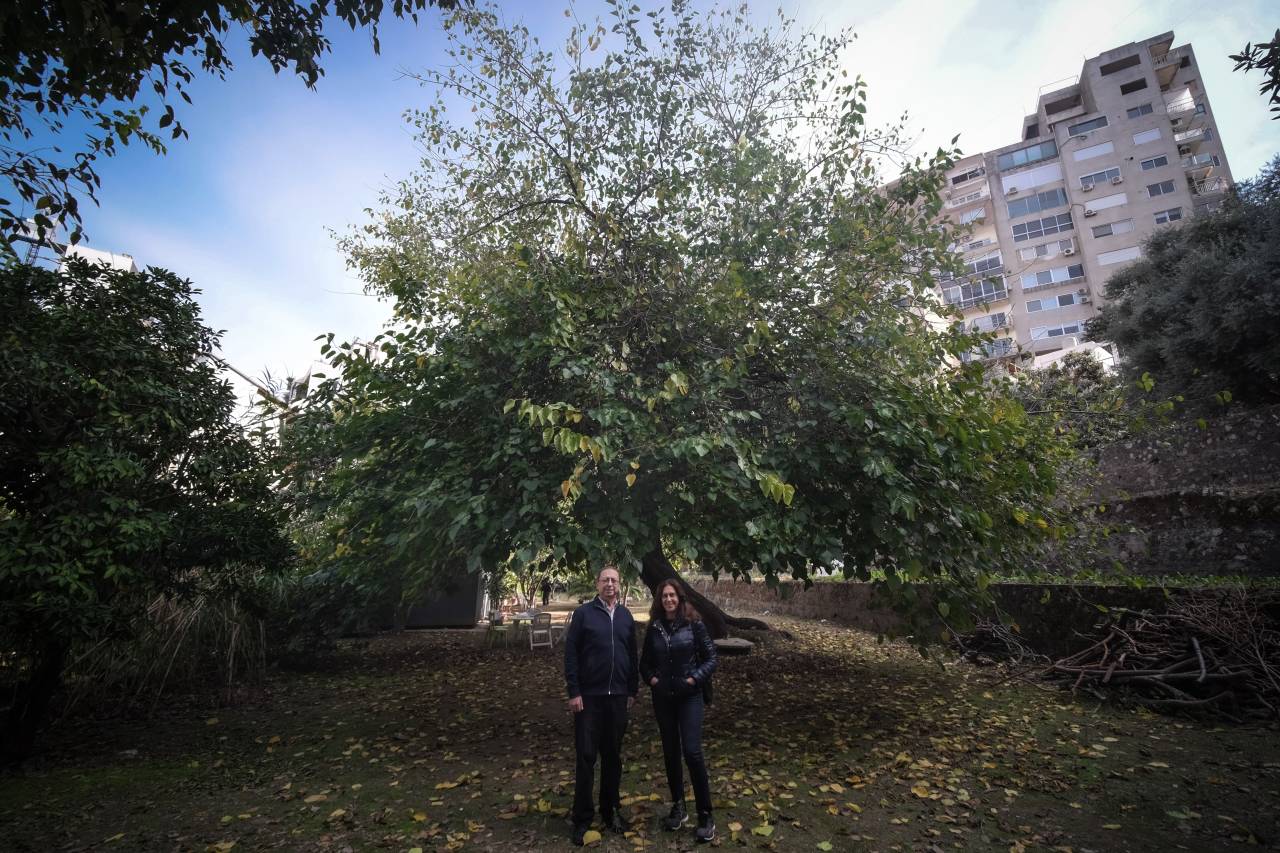 Joseph Tobagi (left) and his cousin Marie Rose Tobagi in front of the 150-year-old berry tree in their family's urban orchard. (Credit: João Sousa/L’Orient Today)
Joseph Tobagi (left) and his cousin Marie Rose Tobagi in front of the 150-year-old berry tree in their family's urban orchard. (Credit: João Sousa/L’Orient Today)
Joseph Tobagi added that his grandfather was one of the founders of nearby St. George Hospital; the Greek Orthodox Bishop at the time asked him to establish the facility because he was a reputable doctor.
During the famine of 1917, Habib Tobagi planted wheat in the orchard and distributed it to the surrounding community to stave off hunger. Marie Rose Tobagi says this explains why a small portion of the garden is empty: “That’s where they planted the wheat.”
Her grandfather also built a shelter with a double wall, padded with sand so that it would protect the family from bombs during the First World War. On top of it, a gardener's shed was built. Both survive today.
During the Civil War, muggers would make their escape from Mar Mikhael through the garden, up the hill, to the safety of Achrafieh.
The garden cascades down the Achrafieh hill and covers a triangular footprint. The orchard was built using a technique called terracing, whereby several layers of flat surfaces were carved into the hillside to increase the surface area of arable land on what would otherwise be a sloped surface. They were mounted by a wall of drystone, soil, and grass. This technique allows for more cultivation and higher crop yield, and experts say it also helps conserve water and prevents soil erosion.
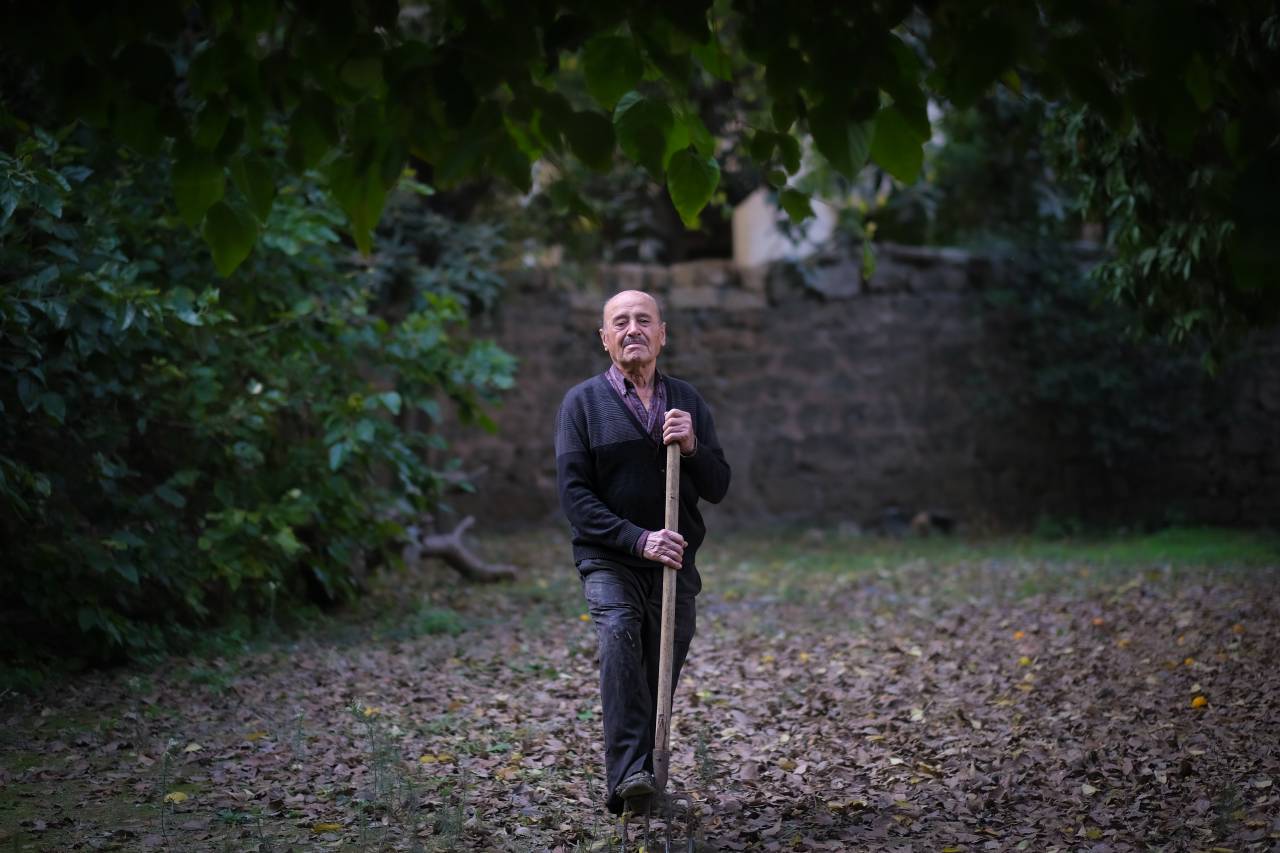 Halim Abi Ghanim, 78, has tended the garden since the end of the Civil War. (Credit: João Sousa/L’Orient Today)
Halim Abi Ghanim, 78, has tended the garden since the end of the Civil War. (Credit: João Sousa/L’Orient Today)
Halim Abi Ghanim, the orchard’s 78-year-old gardener, pointed out that more than 12 different types of fruits and vegetables still grow here.
“Over here is an avocado tree. We started planting it 15 years ago,” he said.
The terraces are planted with a mix of fruit trees on every level. The top layer has olive trees, while the second and third layers produce citrus fruits such as lemons, oranges, clementines, and Seville oranges. This is in addition to bananas, papaya, berries and loquat (acadinia). There’s also a small grapevine.
However, the garden hasn’t always had a secure presence; as Beirut became denser and green space became scarce, its survival has not been easy.
In 1964, the municipality of Beirut began planning a series of roads. This was back when roadworks were a cornerstone of government transportation policy. This transformation coincided with the rolling-back of the tramway system and an increase in the number of cars in Lebanon from 76,000 in 1962 to 130,000 in 1967.
The result was a massive change to Beirut’s urban fabric, splitting neighborhoods apart, including Achrafieh. A series of roads were built to form the intersection we know today as Sassine Square. It was cut out one road at a time from 1964 to 1975: First, the preexisting Furn el-Hayek road was widened and crossed with the newly paved Independence Avenue from Basta.
It was then followed by Alfred Naccache Road, which starts at Adlieh and ends at the Mar Mitr cemetery, connecting to a bridge that was never completed.
In 1975, there were plans to continue this bridge into Mar Mikhael and connect it to the Charles Helou highway via a 24-meter-wide road. These plans entailed bulldozing the Tobagis' garden and home, but construction never commenced, owing to the start of the Civil War.
Almost 40 years later, the second Mikati government resurrected the plan and revised it to a 30 meter wide, four-lane highway.
Spanning 1.3 kilometers, the project, named the Fouad Boutros Highway, would have destroyed 10,000 square meters of green space and thirty buildings, including the Tobagis’ home and garden. The Council of Development and Reconstruction and then-Mayor of Beirut Bilal Hamad claimed this would solve traffic congestion in the area.
Aside from being an outdated method for fixing traffic and the pollution it would create, the plan had another purpose: It was a way to claim more land for developers, as Beirut was in the middle of a real estate bubble at the time.
Urban designer and architect Abdul-Halim Jabr explained that the project would have opened up many inaccessible parcels of land that flank the proposed highway.
The improved accessibility and visibility of the parcels would have attracted developers thus increasing the density of the area.
Moreover, with a new highway, developers could use the building code to their advantage: “You can go as high as two and a half times the width of the street… If the highway is 30 meters wide, you can build 75 meters high with a certain angle for the slant,” depending on the size of the plot and the slope, Jabr added.
In response to this, activists such as Raja Noujaim, Antoine Atallah and Habib Debs mobilized. Their campaign utilized the 2006 amendment to Law No. 58 which specifies that projects intended for the public interest can be substituted with counterproposals, so long as they also benefit the public interest.
The result was a green spine, designed by Debs, connecting all the properties along the route where the highway would have gone.
It would start from the bridge and lead to the orchard, which would become the Dr. Habib Tobagi Botanical Garden, transforming it into a public space and allowing the family to continue to live in their home. It was a tradeoff.
This, on top of the environmental impact report that activists pressured the municipality into producing, ensured the demise of the highway project for the time being.
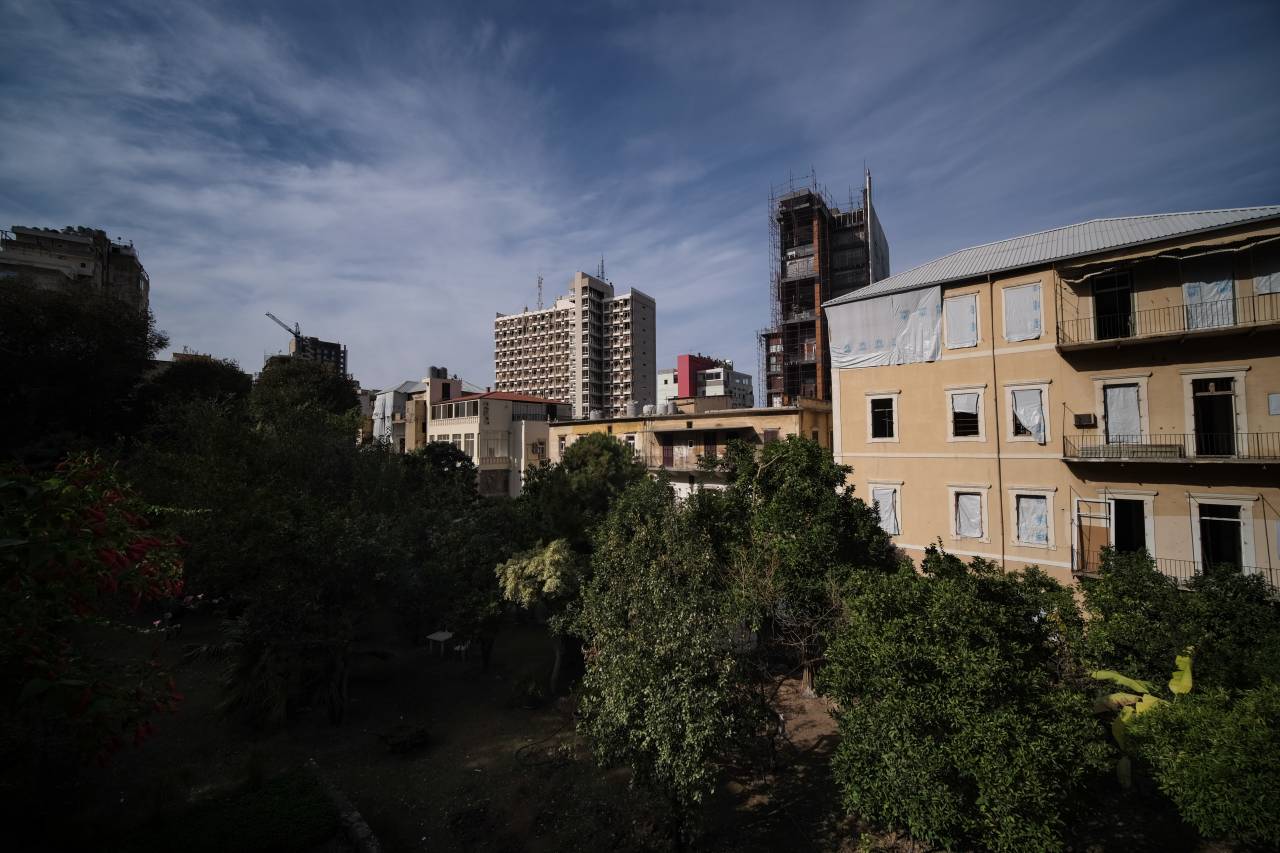 The skyline of Mar Mihael as seen from the Tobagi's garden. (Credit: João Sousa/L’Orient Today)
The skyline of Mar Mihael as seen from the Tobagi's garden. (Credit: João Sousa/L’Orient Today)
The Social Role of the Garden
Some of the trees were destroyed during the war and had to be replaced. In 2001, Joseph Tobagi's elder sister Doris launched a full restoration of the garden, revealing its former glory.
This revitalization paved the way for the family to host small events for family and friends, as well as community gatherings.
The garden also served as a meeting ground for the many experts and activists opposed to the highway project. Ali Ghaddar was one of a group of urban design and planning students studying the area at the time. He recalls Doris inviting them all in for lunch in the garden, where she told them stories of the old Mar Mikhael before the war and before the bars came.
Ironically, the Aug. 4, 2020, Beirut port explosion, which demolished much of the surrounding area, has breathed new life into the garden.
Because it overlooks many of the neighboring houses which were made inaccessible due to the severity of the damage, rescue workers and volunteers carved out a path through the orchard to access buildings and clear the rubble. It also became a place of rest once more.
Tanios Abou Khalil, who volunteered in the aftermath of the blast, recalled seeing many of the first responders using the garden to cool off during the sweltering Beirut summer.
“The fruit trees were groomed in a way to allow people to sit under their shade,” he said.
Currently, Live Love Lebanon has plans to fix up the building and the garden itself. Eddy Bitar, the group’s co-founder, told L’Orient Today that the garden is part of the Rmeil cluster that they are working on and that the intervention is still in the preparatory phase.
Although small in size and the last of its kind, the orchard is an integral part of the city.
“In an area that needs greenery, it has an impact on the microclimate and ecology, flora and fauna and birds, it needs to be protected,” Jabr emphasized.
